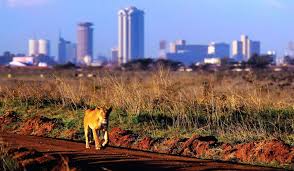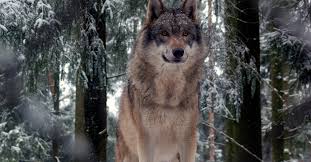Between 2015 and 2019 30 tonnes of ivory and 167 tonnes of pangolin scales were seized. This equates to roughly 4400 elephants dead, and 167,000 pangolins. As in other places, the illegal wildlife trade tends to bring in crime, with the same gangs handling humans drugs minerals and weapons..
Continue reading “Nigeria is becoming the clearing house for poached animals from throughout west Africa: they must stop it”The Colorado population has voted to reintroduce wolves, and how does this square with Trumps delisting of wolves in the USA
At the end of last year, the people of Colorado have voted to reintroduce wolves to the state by 2023. It should be noted that a wolf has been collared in the state in the last few months. It came from a neighbouring state, and therefore clearly wolves would return on their own eventually.
The proposal squeaked across the line with 50.4% of the vote. Now, this decision is complicated by Trumps foolish move to delist wolves throughout the USA, despite their current position. Estimates of the number of wolves in the USA when settlers arrived, range from 250,000 up to 2 million. Even if we assume the low end of the range, the current wolf population of the lower 48 states in the USA is just 6000, a number that we can safely say is at the most, roughly 2% of historical numbers.
Continue reading “The Colorado population has voted to reintroduce wolves, and how does this square with Trumps delisting of wolves in the USA”Liberia has huge areas of intact rainforest: some of the last in west africa. Now its under threat
After the civil war, the Liberian government made a sensible decision in giving communities control to conserve the rainforests around their villages.
Despite this exploration companies have started turning up with permits to explore. These are often dubious, but it is quite common that by the time a permit has been proved false, it is too late.
Continue reading “Liberia has huge areas of intact rainforest: some of the last in west africa. Now its under threat”Lion population expected to half in the wild during the next 15-20 years
While increasing amounts of land is given to wildlife in southern Africa and the lion population grows, unfortunately in east and central Africa the opposite is happening.
Unfortunately in west and central Africa, the lions (many of these lions are orphaned relict populations of the Asiatic lion, and therefore highly important) tend to live in fragmented and small groups cut off from others of their kind. If humans can reconnect these populations then the dramatic decline that is expected in this region, could be halted.
Continue reading “Lion population expected to half in the wild during the next 15-20 years”Synthetic palm oil brewed like beer? Bill Gates investing in the possibility
Palm oil is a wonder material. Being used in a vast range of different products, it is almost impossible to avoid it in the west. Why should we try? because it has been the cause of much of the rainforest destruction on Sumatra, Borneo and lately even in the last great rainforests of west Africa.

It seems that the mara river is threatened as well as the ecosystem
There are many threats to the Serengeti mara ecosystem, from roads crossing to global warming and more. Unfortunately fish in the river are now being driven to extinction as well – putting the livelihoods of millions of people in jeopardy.

From farming deforestation mining illegal fishing and invasive species, there are many different factors damaging this population.
Continue reading “It seems that the mara river is threatened as well as the ecosystem”The palm oil giant Wilmar is making clear its deforestation commitments mean nothing
An area of around 1500 football pitches has been cleared on an oil palm plantation during last year. The concession is managed by PT Medcopapua Hijau Selaras a supplier to Wilmar. Wilmar is the worlds largest palm oil trader, and includes amongst their customers huge companies such as Kelloggs nestle and unilever.
Rather than denying the deforestation occurred, Wilmar has claimed that less land was cleared than is claimed (this is a foolish claim to make as we have satellite pictures from before and after), and then claims that they are not responsible anyway and that the clearing was done by smallholder farmers.
Continue reading “The palm oil giant Wilmar is making clear its deforestation commitments mean nothing”Further threat for Nairobi national park
The first national park to be formed in Kenya would appear to be under threat. Consisting of only 45 square miles, it is unique around the world as the wilderness comes deep into the city, allowing you to view many wild species with skyscrapers as a backdrop.

Wildlife populations have crashed in the last 70 or so years. In the past huge migrations would bring 30,000 wildebeest to visit each year, and animals such as zebra have had population falls of approaching 50% in just 9 years.
Continue reading “Further threat for Nairobi national park”Wolf hunting in the USA: Wisconsin Hunt vastly overshoots
Under Trump, the American wolf lost its endangered species status.
This was not a scientific decision, it was a political. It is true that the number of wolves in North America has grown dramatically since hunting was banned across most areas. However it is absolutely absurd to suggest that the population has recovered.

The Chinese alligator – critically endangered in the wild yet with tens of thousands captive members
These animals were covered during the BBC wild China series a few years ago, and as such a relatively poorly known but highly important animal which plays an important part of the ecosystem in this part of China has likely been saved – though there is still much work to do.

As with an awful lot of other wildlife found within the borders of China, the Chinese alligator is severely endangered. In the wild it’s population numbers around 150, at this population is highly fragmented and no habitat has a significant number of these animals.
Continue reading “The Chinese alligator – critically endangered in the wild yet with tens of thousands captive members”










